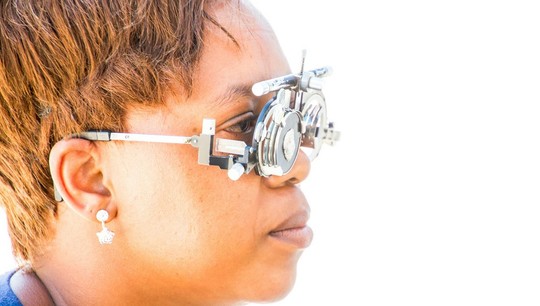Breakthrough: Neural Networks Capable of Identifying Pathologies Posing Threats to Blindness
Specialists from Russia, Germany, and Australia have created a dataset of eye diseases: they have collected a database of optical coherence tomography (OCT) images, a widely used diagnostic method in ophthalmology that allows visualization of retinal layers with histological accuracy and early detection of pathology. The research group has developed the second-largest such dataset in the world and the first in terms of the number of diseases. It will help physicians make treatment decisions and may make treatment of socially significant eye diseases more accessible and faster. The dataset has been registered and patented and is available for download. The researchers have published a description of the dataset and the results of tests on two neural networks in the journal Scientific Data. The work was funded by the Priority-2030 program.
“We created a described and annotated dataset of optical coherence tomography images. The images were collected over several years at the Ekaterinburg Eye Clinic. The dataset consists of OCT images of patients with such pathologies as age-related macular degeneration, diabetic macular edema, epiretinal membrane changes, retinal artery or vein occlusion, and vitreomacular interface disease. This is the first OCT imaging dataset in the world with so many diseases. We hope that it will help to build a higher quality and more accurate decision support system and that other researchers will use our database to build more complex networks”, says Vasily Borisov, Associate Professor at the UrFU Department of Information Technologies and Management Systems.
The researchers tested the dataset on two widely used neural networks, VGG16 and ResNet50, which are recognized industry standards in computer vision systems. They pre-trained the neural networks on the largest database of Chinese ophthalmologists (containing more than 200,000 common diseases). They then loaded their dataset of 2064 OCT images with pathologies.
“First, we had to teach the neural network to extract basic features of the image, i.e. regular features. Then we refined the result of the neural network’s work for specific classes of diseases, showing the necessary examples. As a result, the neural networks were able to identify common and not-so-common diseases from images. For example, for age-related macular degeneration, we achieved high diagnostic accuracy – 97 percent. For retinal vein occlusion – 60-65 percent. The percentage of accuracy depends, among other things, on the prevalence of the disease – the more cases for training the neural network, the higher the percentage of diagnostic accuracy. We will continue to work on this. We will try to expand the database for rare diseases, including hereditary retinal dystrophy, retinopathy of prematurity, and other vision-threatening diseases”, explains Vasily Borisov.
Age-related macular degeneration is a common disease that occurs in patients over 55 years of age, explains the co-author of the paper, chief physician of Professors’ Plus Clinic of Expert Ophthalmology Anastasia Nikiforova. According to her, only 10-15 years ago in the world ophthalmology methods of molecular therapy of this disease. Before that, patients simply lost their sight. The earlier the disease is detected and the indications for the start of active therapy, the better the prognosis of the treatment itself, adds the doctor.
“A trained neural network can be a good assistant for faster diagnosis and determining indications for starting treatment of a disease. But most importantly, it can be useful in conditions of impending staff shortages. Let me explain: there are tomographs in both private and public clinics. In Ekaterinburg, for example, there is about one for every 100,000 people. However, only a small number of ophthalmologists specializing in retinal diseases can work with the scans and understand what is on them. Even in Ekaterinburg, there is a shortage of such specialists. In addition, the optical coherence tomograph is a compact device that can be transported to remote areas of the country to screen the population and select patients for in-depth diagnosis by specialized ophthalmologists”, explains Anastasia Nikiforova.
The new database and trained neural networks can help determine whether the eye’s condition is normal or not, as well as suggest what abnormalities may be present.
“Of course, the patient will be guided by a doctor, but a neural network can help to more quickly suspect a dangerous diagnosis and organize a quick transfer of the patient to a private or state-specialized clinic, which will subsequently help to preserve the maximum quality of vision and life of the patient. Ideally, the tomography scanners will be equipped with software that will tell us that 100 out of 10 thousand scans in an examination have a problem that needs attention and that there is a high probability of some disease. That is what we are striving for”, adds Anastasia Nikiforova.
The Professors Plus Clinic of Specialized Ophthalmology is a training base for the medical staff of the Ural State Medical University and the Sverdlovsk Regional Medical University.

